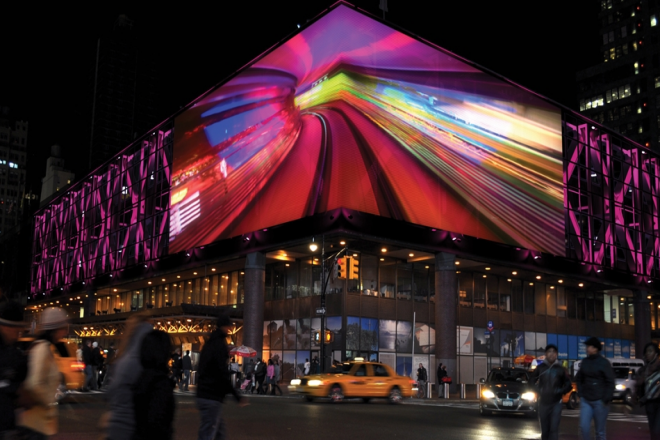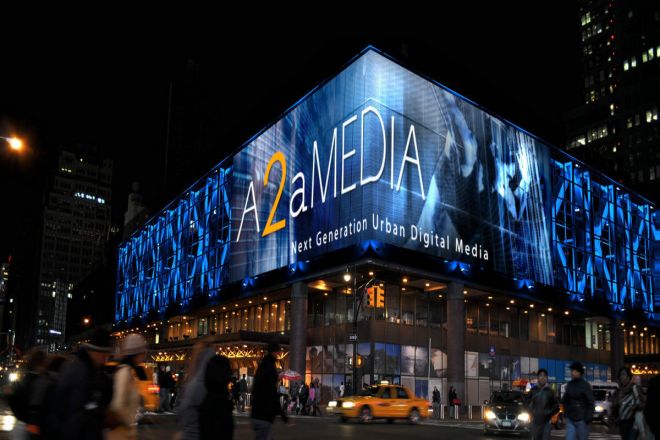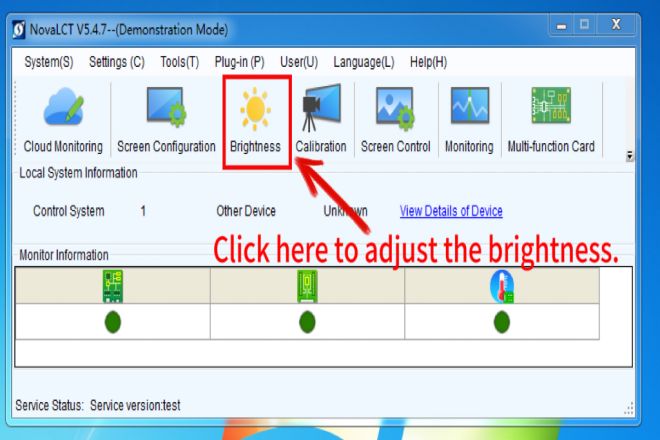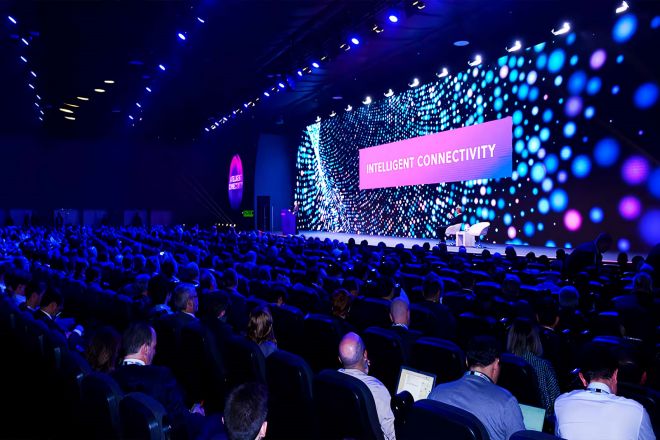Introduction

In the digital age, LED displays have become an indispensable part of our lives. Whether in shopping malls, stadiums, movie theaters, or outdoor billboards, we can see them everywhere.
In these displays, brightness is undoubtedly a very important parameter. So, what is the importance of the brightness of LED display? How do you adjust the brightness? Let’s take a look.
1. Introduction to LED display brightness
The brightness of an LED display refers to the luminous intensity per unit area when the display is working normally, and its unit is candela per square meter (cd/m²). Simply put, it is the luminous intensity in candelas (cd) per square meter of area.
Brightness is an important indicator to measure the performance of an LED display. It is related to factors such as the number of LEDs per unit area, the brightness of the LED itself, and the driving current.
The brightness value of an LED display screen varies depending on its application environment and design goals. Generally speaking, the brightness range of indoor LED displays is recommended to be around 800-1200cd/m², while the brightness range of outdoor LED displays is around 5000-6000cd/m².
However, this does not mean that the brighter the LED display, the better. Excessive brightness may increase the driving current of the LED light, thereby affecting the performance and life of the product.
For example, if an outdoor LED display has a maximum brightness of 6000cd/m², but you try to adjust its brightness to 7000cd/m², it may exceed its endurance range, resulting in reduced performance or shortened lifespan.
In addition, some areas have restricted the brightness of outdoor LED displays to prevent them from causing interference to the environment and residents. Therefore, when selecting an LED display screen, the appropriate brightness value should be selected based on actual needs, and the environment should be used to ensure its performance, lifespan, and environmental protection.
2. The importance of LED display brightness

The importance of the brightness of the LED display screen to the LED display screen is mainly reflected in the following aspects:
- Viewing experience:
Brightness is a key factor in determining the viewing experience of LED displays. For indoor environments, appropriate brightness can ensure that viewers watch content in a comfortable environment, while excessive brightness may make people feel dazzled.
For outdoor environments, where the light is stronger, the display needs to be brighter to ensure the content is clearly visible.
For example, If you have an LED display in a sunny square, but the brightness is very low, it may be difficult for people to see the content on the screen because the sunlight is brighter than the light of the screen. Therefore, in order to make the content clearly visible in this environment, the display needs to be brighter.
- Application scope:
Brightness also determines the application scope of the LED display. For example, high-brightness LED displays are more suitable for use in places with strong light, such as outdoor billboards and sports venues, while low-brightness displays are more suitable for indoor environments.
Energy consumption and lifespan: Brightness is closely related to the energy consumption and lifespan of the LED display. Excessive brightness may increase the driving current of the LED lamp, causing it to heat up too quickly, thus affecting its service life.
Therefore, on the premise of ensuring the display effect, reasonable control of brightness can help extend the service life of the LED display and reduce energy consumption.
- Color performance:
Brightness also has a certain impact on the color performance of LED displays. Appropriate brightness can ensure bright colors and clear layers, while too high brightness may cause color distortion.
3. Detailed step-by-step explanation: How to adjust the brightness of the Nova control system
1). Detailed steps
- Step 1: Download and Verify

First, make sure you have successfully downloaded the exclusive software from the official website of Nova Control Systems or designated channels. This software is specially designed for Nova control systems and can provide you with the most direct control experience. After the download is complete, follow the prompts to install.
- Step 2: Start the software

After the installation is completed, click the login button. If your LED display is synchronously controlled, select the synchronous control system. If your LED display is asynchronously controlled, select the asynchronous control system. Select the control system to log in.
After logging in, the software interface should be clear and all functions should be clear at a glance. In the main interface of the “NOVALCT” application, you should be able to see a font or icon called “Brightness” and click on it.

- Step 3: Brightness adjustment

At this time, a new window will pop up. This pop-up window usually displays a moving bar with a weight on it, which represents the current brightness level.
To adjust the brightness, you simply drag the weight on the moving bar with your mouse or finger. You should be able to see the brightness change in real-time as the weights move. When the weight moves to the brightness position you want, release the mouse or finger, and the brightness adjustment is completed.
2). Precautions
When adjusting the brightness, make sure you are in an environment suitable for adjusting the brightness so that you can accurately judge the desired brightness level.
If you find that the brightness adjustment does not take effect or appears abnormal, please check your device connection and software settings to make sure everything is normal.
4. The impact of LED display brightness is too high or too beneath
The brightness of the LED display is an important factor affecting the display’s effect. Too high or too beneath have consequences.
1). Possible effects of too high brightness
- Visual discomfort and light pollution:
Excessive brightness will first cause direct stimulation to the viewer’s eyes, leading to visual fatigue or discomfort. Especially at night or in dark light environments, high-brightness LED displays may be as dazzling as strong light and even affect people’s normal life and rest. This high-brightness light may also cause light pollution to the surrounding environment and interfere with the normal life of residents.
- Energy efficiency and cost:
High-brightness LED displays often require more power to maintain their high-brightness state. This not only increases operating costs but also goes against the concepts of energy conservation, emission reduction, and green development advocated by the current society. Long-term high-load operation may also cause equipment to overheat, further increasing energy consumption.
- Equipment life and maintenance:
Continuous high-brightness operation may accelerate the light attenuation of LED lamp beads, reduce their luminous efficiency, and may even directly cause the LED lamp beads to burn out. This means that lamp beads or the entire display needs to be replaced more frequently, increasing maintenance costs and trouble.
- Environmental impact:
High-brightness LED displays may interfere with nearby electronic equipment, such as cameras, sensors, etc., affecting their normal operation.
2). Possible effects of too beneath brightness
- Display effect and user experience:
Too beneath brightness may cause the LED display to have poor display effects, with colors appearing dim and details blurred. This not only affects the audience’s recognition and understanding of the content but also reduces the viewing experience.
- Adaptability issues:
If the brightness of the LED display differs too much from the surrounding environment, it may cause visual discomfort. For example, in a well-lit outdoor environment, too beneath brightness may make the display content difficult to discern, requiring the viewer to focus hard to see clearly.
- Safety hazards:
In some specific scenarios, such as traffic instructions, emergency evacuation, etc., too beneath brightness may cause the instruction information to be insufficiently obvious, increasing the risk of accidents.
5. What phenomenon occurs that indicates that the brightness of the LED display needs to be adjusted?

Visual discomfort: When viewers feel eye fatigue, tingling, or discomfort when viewing LED displays, it may be because the brightness is too high or too low. At this time, appropriately adjusting the brightness can alleviate the discomfort of the audience.
Color distortion: Excessive brightness can cause color distortion, making colors appear too bright or unrealistic. Properly adjusting the brightness can restore normal color performance and improve the display effect.
Content is difficult to identify: In an environment with strong or dark light, if the brightness of the LED display is set improperly, the content may be difficult to identify. Viewers have to work hard to focus their eyes to see the content on the screen, so the brightness needs to be adjusted to improve the readability of the content.
Excessive power consumption: If the brightness of the LED display is too high, it may cause excessive power consumption and increase operating costs. Properly adjusting the brightness can reduce power consumption and achieve energy conservation and emission reduction.
Device overheating: Excessive brightness may cause the device to overheat, thereby affecting its stability and life. If your device is in a high-temperature state for a long time, you need to consider adjusting the brightness to reduce the temperature of the device.
Conclusion
During the use of LED displays, brightness adjustment is a crucial task. It is not only related to the viewing experience of the audience but also closely related to the energy efficiency, lifespan, and environmental adaptability of the equipment. Do you know the brightness adjustment method and what needs to be adjusted?
If you want to know more, please get in touch with us!
